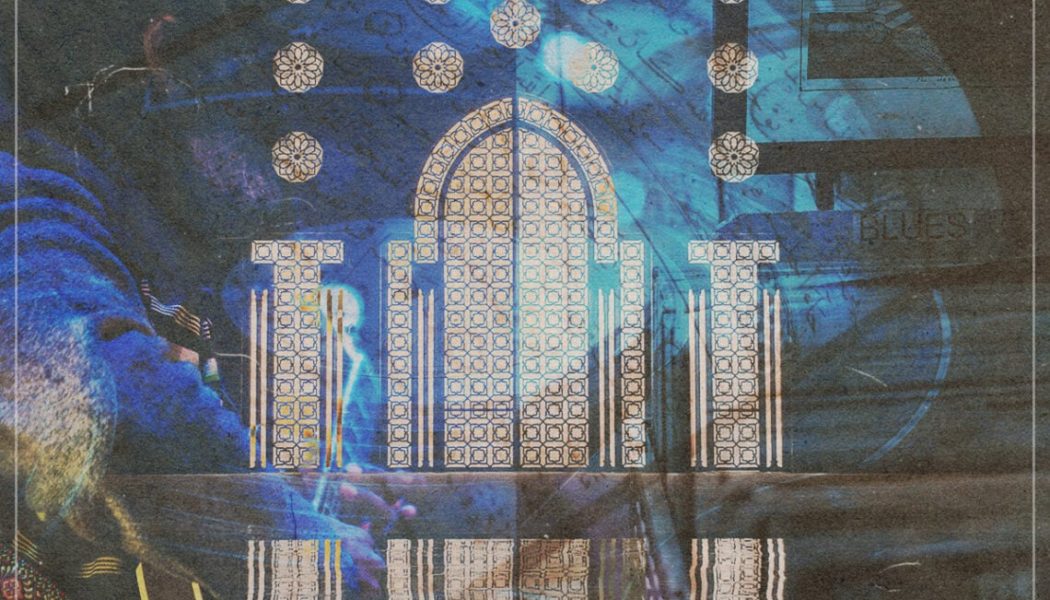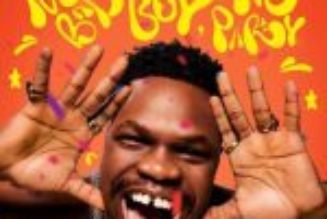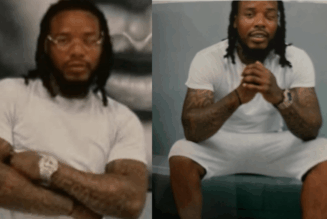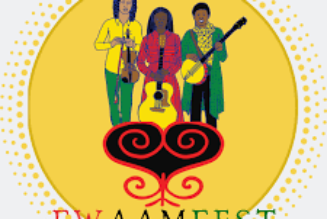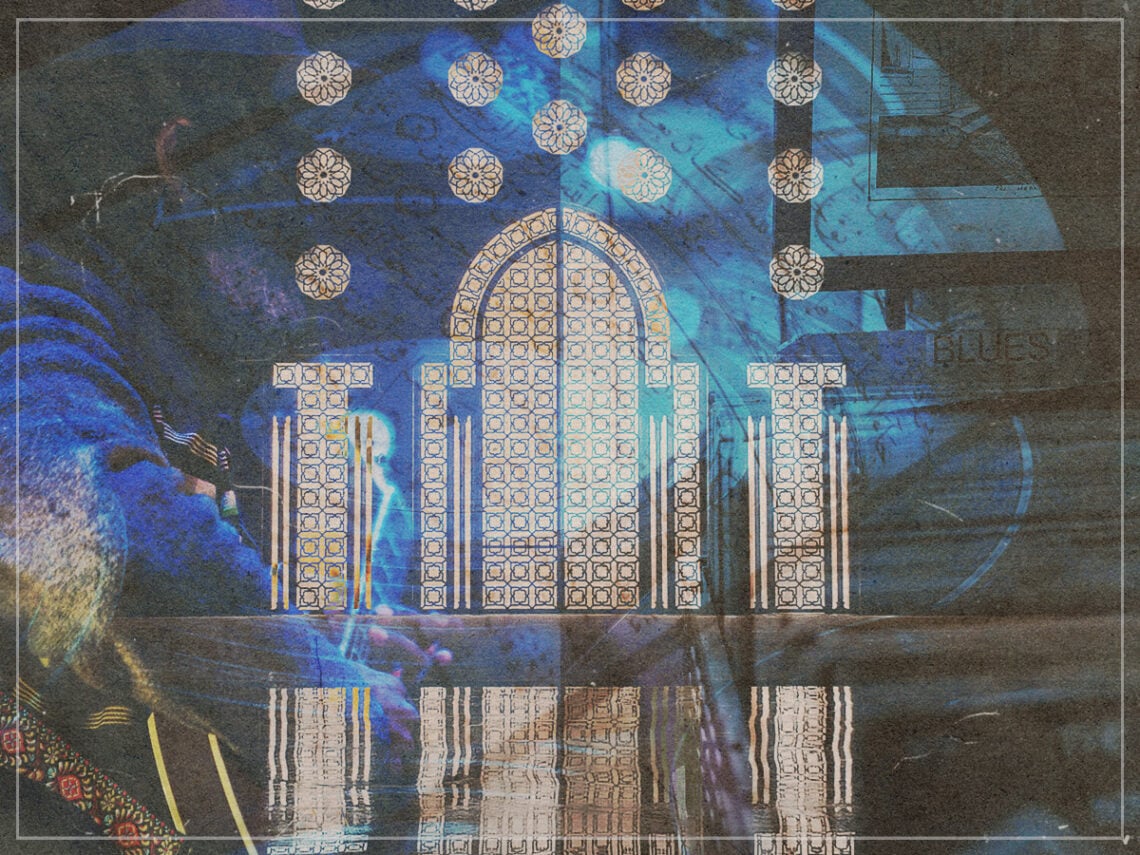
(Credits: Far Out / Jawad Jawahir / Austin Neill / Huilin Dai)
While the blues provided the basis of popular music, not much is known about the specifics of its origins. As with most cultural trends, no specific year has been associated with its beginning because the genre evolved over a prolonged period and existed long before Western scholars categorised it using the tag ‘blues’. What is certain, though, is that many of its roots can be traced back to the African continent and that the wicked transatlantic slave trade had an instrumental role in bringing it to the plantations of the American deep south. Some have also argued that the Islamic religion influenced the genre’s emergence.
First, we need to examine the characteristics of the blues as we know it today through a modern lens, a landscape shaped thanks to players like Robert Johnson and Eric Clapton, who repackaged the genre for modern listeners, and how some are common in old styles of African-American music. The earliest form of music from the plantations closely tied to the blues has been noted for its expressive nature and the call-and-response vocals that would become a crucial part of the modern understanding of the genre. It is asserted that this form of pre-blues music originated with the field shouts performed during the period of slavery, which had an understandably profound emotional essence.
Elsewhere, the use of melisma in singing – piping a single syllable of a word while moving between several different notes – a ubiquitous feature of modern popular music and the opposite of syllabic singing, has been attributed to traditional West and Central African music. Furthermore, parallels have been drawn between African instruments, such as the Akonting, the folk lute of the Senegambian Jola tribe, and the American banjo, a vital tool in the early American blues.
All of this fits into the conventional understanding of the blues, which is so widespread that students were even taught parts of it as part of the old music courses. Yet, as the origins of the blues remain open to interpretation in some aspects because of its evolvement over centuries, some areas are contested. One of the most fascinating is that some scholars pinpoint Islamic music as having a defining influence on the blues as we know it today. Two of the most prominent figures to do so are historian and curator of the African diaspora Sylviane Diouf and Austrian ethnomusicologist Gerhard Kubik.
Diouf maintains that there’s a resemblance between the Islamic call to prayer, which originated in the early 7th century with Bilal ibn Rabah, and the 19th-century field holler music. Substantiating this claim is that ibn Rabah – one of the most trusted Sahabah (companions) of the Islamic prophet Muhammad (peace be upon him) – was a former slave from Abyssinia, now known as Ethiopia. There is authenticity afforded to this claim when noting how deep-rooted and historical the cultural links between Africa and the Muslim world are. Diouf also figures that the lyrics praising God, melody, and even note changes are similar to that which emerged in the American deep south over a millennium later.
Diouf goes one step further in her account. She states that field holler music might have spread through the enslaved African Muslims, who at one point accounted for roughly 30% of those in America. She claims that of the estimated 400,000 people first transported to America, many were Sunni Muslims from the West African area of the Sahel, which she describes as “stretching from Senegal in the West to Sudan in the east”. According to her study, this area was shaped by its contact with the Arab-Berber world from the eighth century onwards.
As quoted in the San Francisco Chronicle, Kubik supports this idea: “The vocal style of many blues singers using melisma, wavy intonation, and so forth is a heritage of that large region of West Africa that had been in contact with the Islamic world via the Maghreb since the seventh and eighth centuries.”
Considering the idea that melisma made its way into the blues via the Islamic world is fascinating, given that it is now a ubiquitous feature of Western popular music, an area that has long been pitted as the antithesis to its Eastern counterpart. Thanks partly to the foundational nature of the blues, melisma is now a fixture of modern popular music. Whether it be Frank Sinatra’s stirring spells in Las Vegas, The Beatles’ inventive forms of delivery colouring albums like Sgt. Pepper’s, or even Layne Staley’s hair-raising performances for grunge stalwarts Alice in Chains, much can be traced back to it. Furthermore, there’s no way that ibn Rabah could have foreseen just how pervasive his efforts would be in producing music so far removed from his own that no doubt would have left him flabbergasted and, most likely, outraged.
As quoted in Roberto Tottoli’s 2014 work, Routledge Handbook of Islam in the West, Diouf’s idea about how the Islamic world influenced the development of the blues is explained in greater detail. According to this book, she claims that as American plantation owners feared slave uprisings, they outlawed group chants and drumming, two aspects originating with the non-Muslim enslaved West Africans. As the Sahelian and Senegambian music traditionally championed string and wind instruments, they had more straightforward means of preserving their music and skills via the local instruments such as the fiddle and guitar, which she also claims birthed the banjo as a version of their musical tools like the Akonting. As the first creators of the banjos were indeed African Americans in the 19th century, it’s not hard to see how something like the traditional Akonting might well have provided its creators with a blueprint for their new, Americanised instrument.
Due to the apparently “less threatening nature” of these Muslim styles, as they developed in the American mould, some of the enslaved folk were allowed to perform their music. This crossed over the racial and cultural threshold in such a way that in the early days of the blues, Diouf states that, every so often, this would include the slaveholder’s balls, which had an instrumental role in music spreading across the deep south into areas like Mississippi, the home of the blues genre.
Whether you agree with the claims of Diouf and Kubik, very few can doubt the ample evidence that is attached to their claims. It’s a fascinating account that veers off the traditional route and makes much historical sense.
